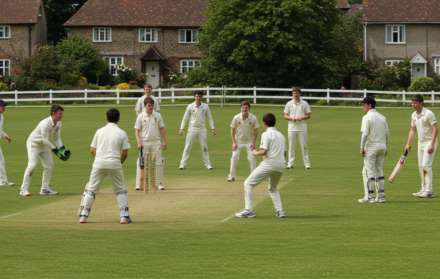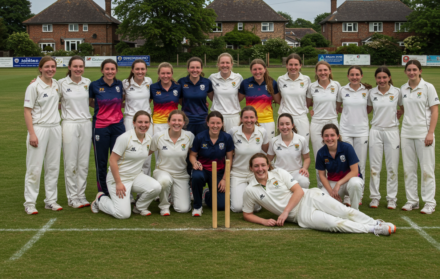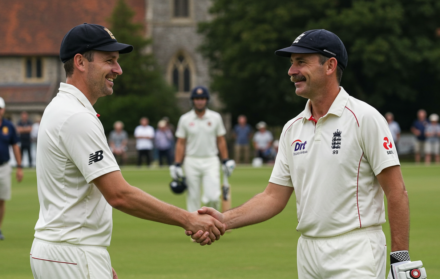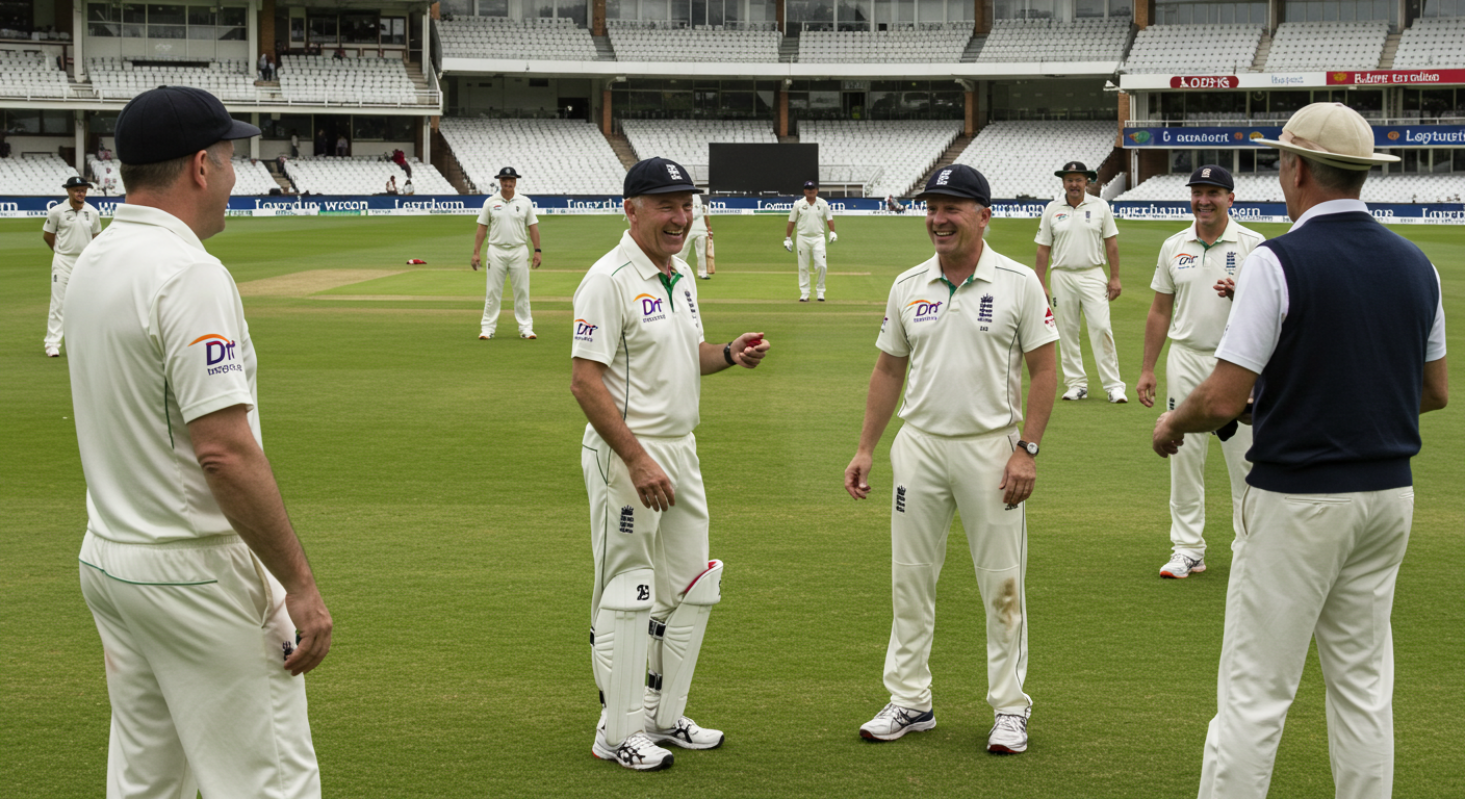
Every Village Needs a Cricket Team: Here’s Why
There’s something timeless about the sight of cricket whites on a sun-dappled village green. It’s not just a game; it’s a piece of living history. Every boundary, every dropped catch, every slightly wonky homemade scoreboard tells a story — not just of cricket, but of community.
In an era where much of life feels rushed and disconnected, a village cricket team stands proudly as a reminder that some things are better unhurried. Saturday afternoons become sacred. Pubs fill up with post-match banter. Grandads lecture grandchildren about “the proper way to play a forward defensive.” The emotional pull isn’t about glory — most village teams, if we’re honest, can’t catch a cold — it’s about the ritual, the gathering, the laughter when someone misses the ball by a mile.
Every village needs a cricket team because it brings this glorious imperfection to life. You’ll find cricket captains who select teams based on who’s available rather than talent. Batsmen who bring their dog onto the field “because he’s good luck.” Bowlers who swear blind the sun was in their eyes when they sent down a delivery so wide it almost hit the tea tent.
Every village deserves that chaos, that camaraderie. In the end, the cricket itself is only half the story. It’s the barbecues after the game, the volunteers running the raffle, the sense that — just for an afternoon — the world beyond the hedgerows doesn’t matter one bit.
1. It Brings Everyone Together (Even Barry Who Thinks He’s Shane Warne)
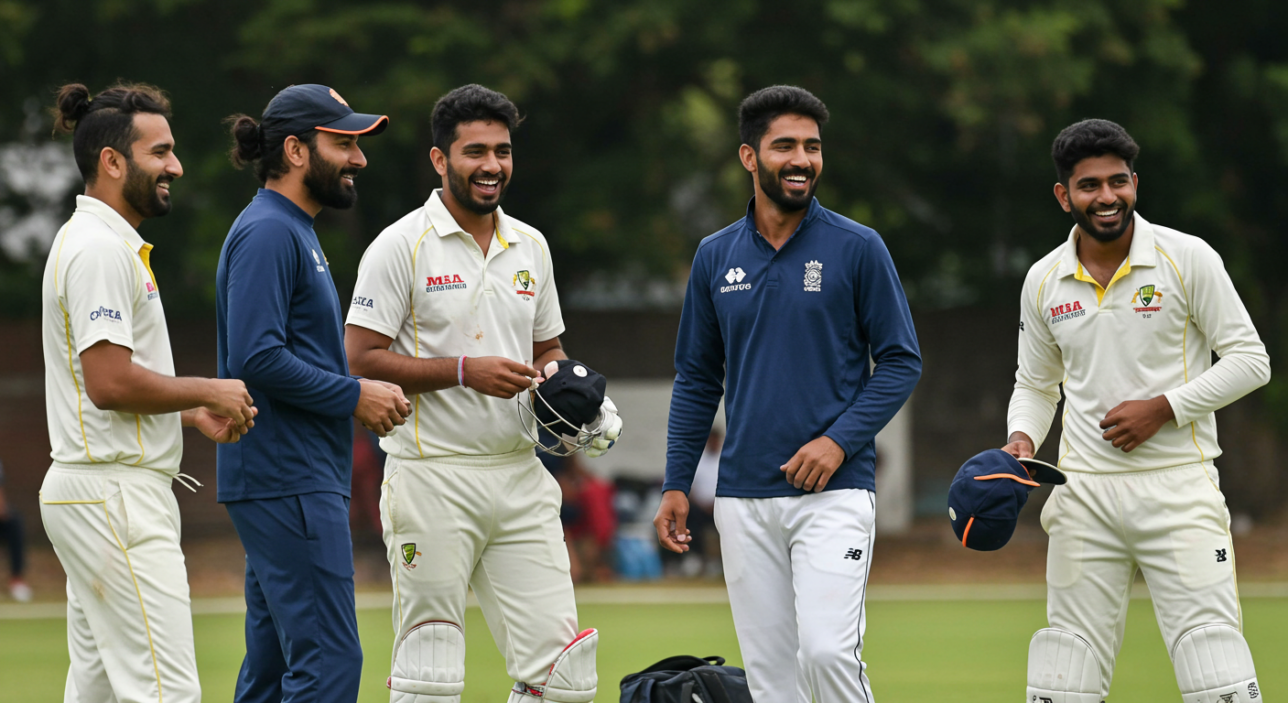
There’s a certain magic to seeing the whole village out for a match. Not just the players — the fans, the families, the bloke from the pub who insists he was “one game away from county cricket” before his “dodgy knee” ended his career. Everyone, from toddlers with mini bats to pensioners clutching flasks of tea, has a role to play.
Take last summer’s match in Lower Muckford. The match hadn’t even started before Margaret from the bakery was handing out sausage rolls, still warm. Old Bill, who hasn’t moved faster than a tortoise since 1989, turned up with a deckchair and his personal windbreaker (which he insists is necessary even when it’s 25°C). And Barry — oh, Barry — was practising his leg spin deliveries in the car park, narrowly missing three Volvos and a mobility scooter.
Village cricket isn’t about elite performances; it’s about creating shared moments. A six over the clubhouse roof gets a bigger cheer than a Test century. A fumbled catch is greeted with the same theatrical groans year after year. And everyone — player, spectator, and slightly inebriated bystander — feels like they’re part of it.
In a world of individual screens and isolated living, that feeling is gold dust. Cricket gives villages an excuse to gather, gossip, guffaw, and grumble together, all under the gentle whack of bat meeting ball.
2. It Teaches Youngsters More Than Just Cricket
Every village team has a junior section — a brave, chaotic group where lessons extend far beyond how to bowl a straight one. Kids learn patience (mostly while fielding at fine leg), resilience (after dropping an absolute sitter), and humility (after swinging and missing at a ball slower than a tortoise on a day trip).
Take young Tom from Great Wibblestone. Turned up for his first ever match in a brand-new kit, looking like a tiny Ben Stokes. First ball: bowled. Tears. Second innings: dropped a catch. More tears. But by the end of the summer, Tom was happily chasing leather around cow corner, laughing as much as anyone when he tripped over his own shoelaces. He didn’t just learn how to play — he learned how to lose, how to laugh at himself, and how to carry on.
Village cricket teaches kids that life isn’t always about winning, and that sometimes your biggest achievement is simply sticking with it. It also teaches vital social skills: how to chat to pensioners over a cup of squash, how to shake hands properly, how to apologise when you accidentally launch the ball into Mrs Jenkins’ prize-winning begonias.
You could stick them in front of an iPad all summer. Or you could hand them a bat, plonk them in a field, and watch them grow into half-decent humans.
3. It Keeps Local Characters at the Heart of the Village
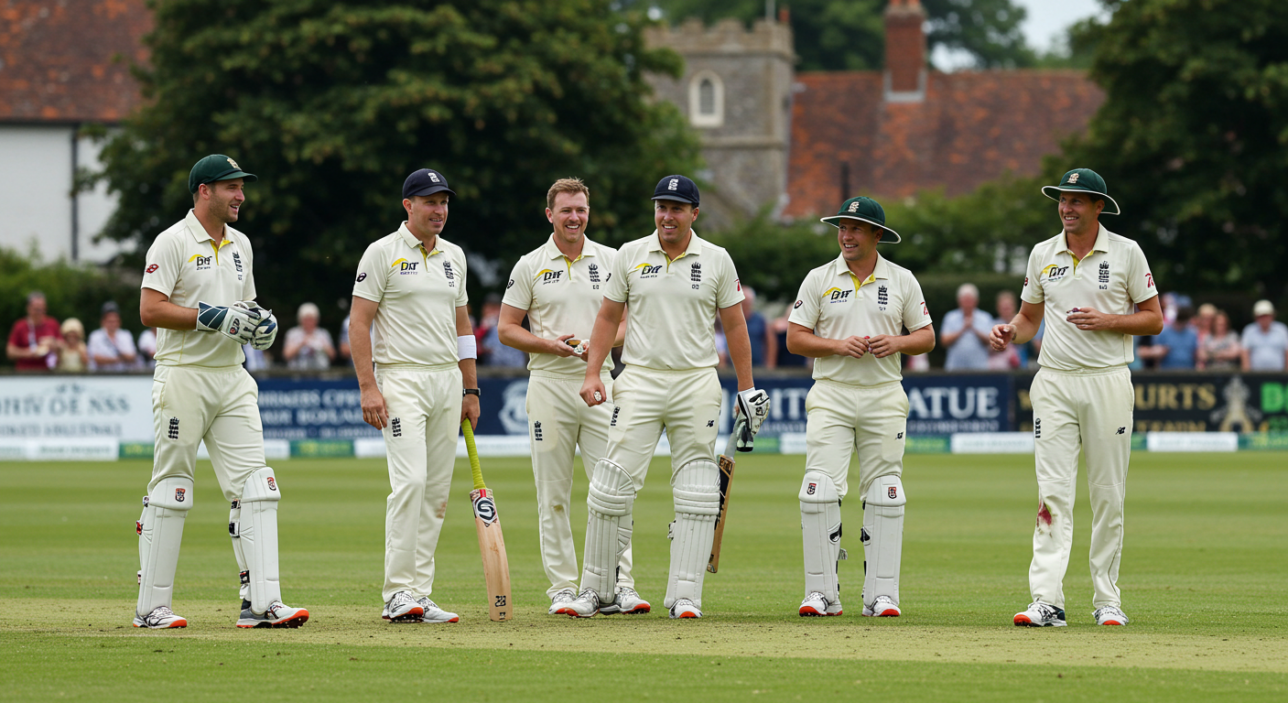
Every village has its legends — and more often than not, they’re best seen at the cricket ground. There’s the club stalwart who’s captained the third XI for 47 years. The tea lady who insists on making five types of sponge cake “just in case.” The umpire who’s as blind as a bat but has a sense of occasion unmatched by any international referee.
Take Derek from Little Butterworth. Derek’s been umpiring since the early ‘80s and has never once given an LBW decision — largely because, in his words, “it’s a silly law and best ignored.” His standard call, when an appeal goes up, is a firm, “Not out, because I don’t want to walk back to the pavilion alone.” In most sports, that’d be scandalous. In village cricket, it’s just part of the charm.
Local characters give the game colour and life. They’re the ones who remember when the square was levelled with a tractor and three enthusiastic pensioners. They’re the ones who greet every pulled hamstring with a knowing chuckle and a packet of frozen peas. And they’re the ones who’ll still be there, rain or shine, reminding everyone that village cricket is about heart first, results second.
Without a cricket team, those characters lose their stage — and villages lose a bit of their soul.
4. It Provides Endless, Glorious Comedy
You don’t need to watch The Office or Fawlty Towers when you’ve got a Sunday XI trying to chase 147 with nine players and a dog. Village cricket is a bottomless source of unintentional hilarity.
There’s the batter who celebrates a boundary so wildly he pulls a hamstring. The fielder who spends more time chatting to cows at deep mid-wicket than watching the game. The wicketkeeper who misses a stumping because he’s too busy waving at his mum.
One golden afternoon in Middle Snetterton, a game had to be paused because the opening bowler’s trousers split so dramatically mid-delivery that half the team collapsed laughing. He tried to soldier on, but it’s remarkably hard to appeal for LBW when your dignity is flapping in the breeze.
Then there’s the classic tales: the batsman running himself out while trying to rescue his hat from the wind; the fielder who took a catch and a wasp sting simultaneously; the ball stuck in the tree, leading to an emergency meeting on whether six runs should still count.
These aren’t just funny at the time — they become village folklore, recounted over pints for decades to come. In village cricket, every disaster is a future dinner party anecdote. Every slip-up is a reminder that sport, at its best, should make you laugh as much as it makes you cheer.
5. It Keeps Old Rivalries Alive (and Mostly Friendly)
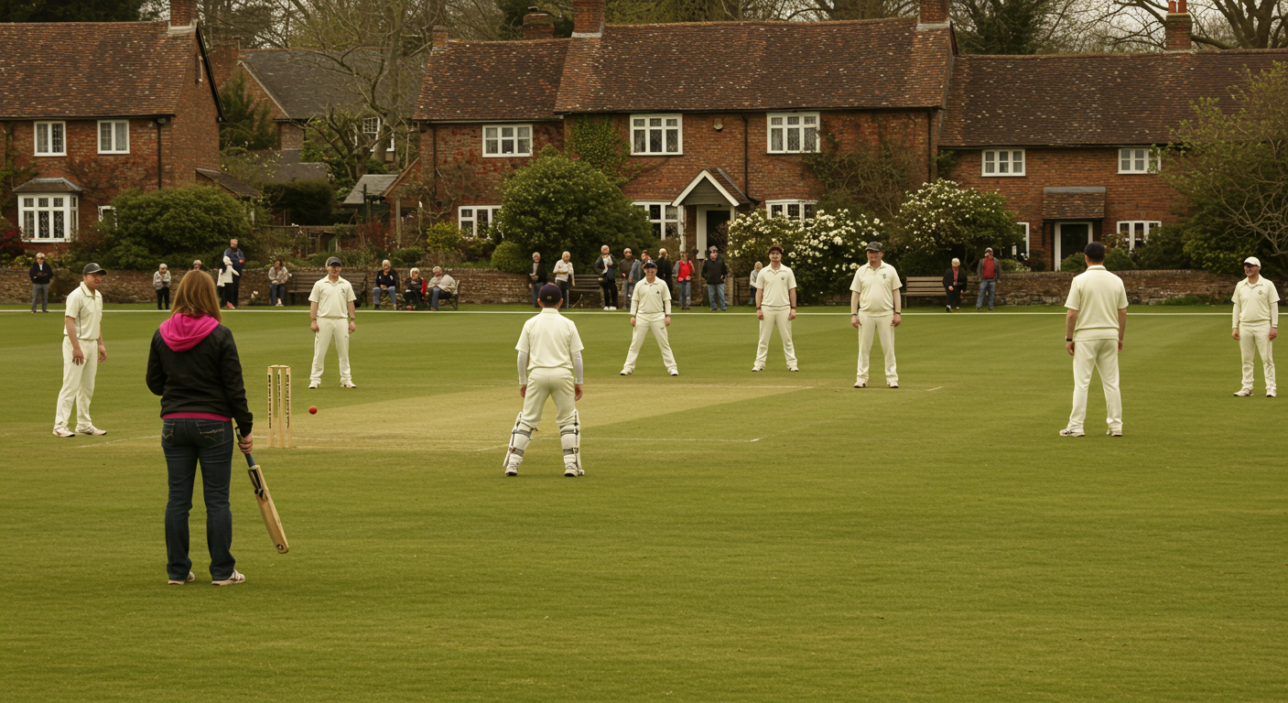
You haven’t truly lived until you’ve witnessed a 70-year-old squaring up to a 16-year-old over a disputed catch at backward point. Village cricket thrives on old rivalries — half-remembered grudges from matches long past, fuelled by dodgy umpiring decisions and competitive cake-baking contests.
Take the historic grudge between Upper Throckmorton and Lower Throckmorton. No one quite remembers how it started — some say it was a disputed LBW decision in 1974, others blame a particularly aggressive Victoria sponge at a charity tea. Either way, every time the two villages meet, the tension crackles like a dodgy amplifier.
Mind you, ‘tension’ is relative. Most of it plays out through fiercely polite sledging and suspiciously enthusiastic applause for dropped catches. After the match, everyone trots off to the pub to argue about it over pints and pickled eggs, the losers usually buying the first round.
Rivalries give village cricket an edge, a reason to mark the calendar, a little fire under the otherwise genteel proceedings. Without them, matches would risk becoming too tame — and let’s face it, everyone loves a bit of competitive spice, as long as it ends with handshakes, smiles, and maybe a thinly veiled threat to “get you next year.”
6. It Makes Tea the Most Important Meal of the Day
Forget fancy sports drinks and protein bars. In village cricket, your true performance enhancer is the legendary cricket tea — a sprawling buffet of homemade sandwiches, Victoria sponges, pork pies, and enough sausage rolls to feed an army.
The tea break is a sacred ritual, spoken about in reverent tones. It’s where fortunes are analysed, matches are won and lost , and where lifelong friendships are cemented over too many jam tarts.
Take the epic spread at Nether Wibblestone’s ground. They have a rota, a spreadsheet, and a highly controversial ranking system for the best teas of the season. Last year, Mrs Hughes’ cheese and pickle sandwiches narrowly beat Mr Patel’s samosas by half a point — and that was after a formal tasting panel was convened under the gazebo.
Cricket tea isn’t just about sustenance — it’s theatre. There’s the mad dash when the whistle blows, the strategic battles over the last slice of chocolate cake, the whispered awe when someone unveils a homemade quiche still warm from the oven.
In many ways, tea is the heart of village cricket. It reminds everyone that while runs and wickets matter, they’ll never be as important as a well-buttered scone and a bit of friendly gossip in the sunshine.
7. It Keeps Traditions Alive for the Next Generation
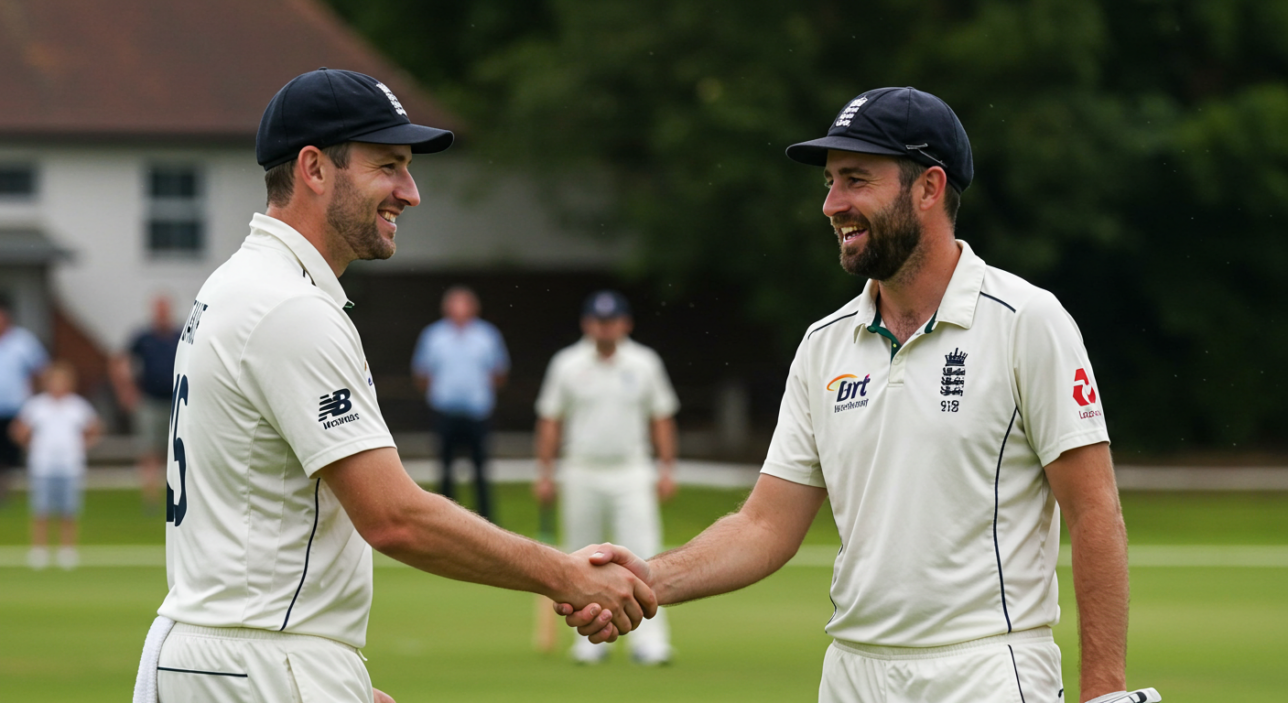
Village cricket is living history, stitched together with creaking whites, battered scorebooks, and boundary ropes older than most of the players. Keeping a team alive means keeping traditions alive — and not just the obvious ones like underarm bowling challenges or the annual match against the village fete committee (where someone always ends up batting in a chicken costume).
There’s deeper stuff too. Like teaching newcomers to nod politely at the umpire even when they’re furious inside. Or the sacred art of “gardening” (i.e., tapping down imaginary marks with your bat to buy yourself thinking time after a terrible shot). Or the correct response to an appeal even if you’ve no clue whether the ball hit pad, bat, or air.
You see it clearest when kids graduate from the juniors into the seniors. One week they’re too small for the pads; the next, they’re being handed the keys to the kit shed and trusted to put out the boundary flags. It’s not just about playing a game — it’s about passing down a way of life.
When a village loses its cricket team, it doesn’t just lose a few matches a year. It loses decades of rituals, jokes, and stories, strung together over countless lazy summer afternoons. It loses something utterly irreplaceable — the invisible thread linking past, present, and future.
Conclusion: Why Every Village Needs a Cricket Team
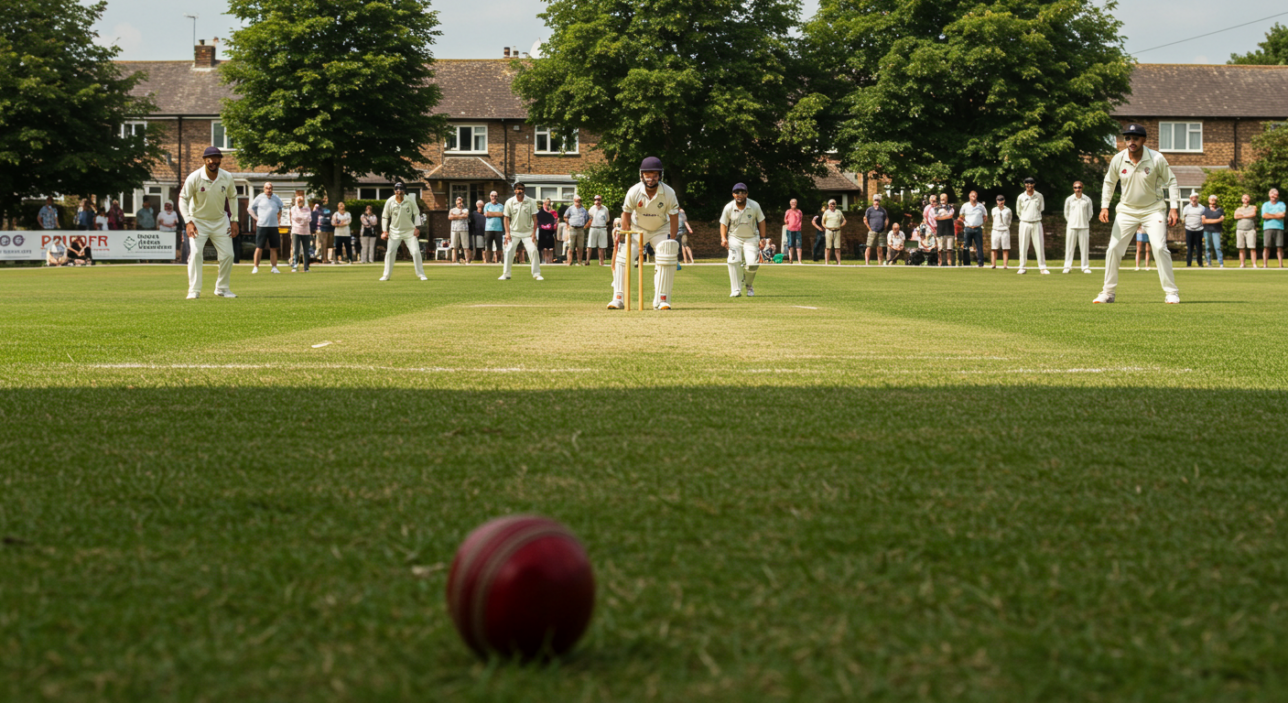
When people say “it’s just cricket,” you can be fairly certain they’ve never sat by the boundary rope at sunset, watching steam rise off damp grass while someone nurses a bruised shin and another plans the post-match BBQ. They’ve never seen a whole village will the last batsman to hang on for just one more over. They’ve never had their tea ruined by a rogue wasp dive-bombing the sponge cake.
Because village cricket isn’t just cricket. It’s the soundtrack to childhoods, the setting for first friendships, the backdrop to generations of gentle rivalries and quiet triumphs. It’s the laughter after someone falls over their own pads, the collective groan when rain clouds roll in, the hush when an ageing batsman takes guard like it still matters more than anything.
In a world that increasingly values speed, efficiency, and high-definition distraction, village cricket insists on something slower, softer, and infinitely more precious. It reminds us that success isn’t always about the scoreboard. Sometimes, it’s about who brings the best Victoria sponge, who remembers to pack the spare stumps, who makes everyone feel like they belong — even if they can’t bat, bowl, or catch to save their life.
Every village needs its cricket team. Not just for the wickets and runs, but for the stories, the silliness, the stitched-together sense of home it quietly, stubbornly, keeps alive.
